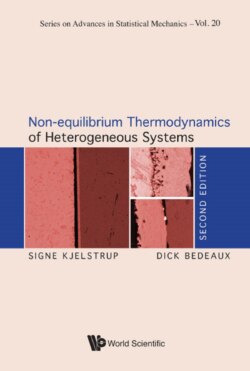Читать книгу Non-equilibrium Thermodynamics of Heterogeneous Systems - Signe Kjelstrup - Страница 30
4.2.1Why one should not use the dissipation function
ОглавлениеConsider three thermal reservoirs with internal energies Ua, Ub, Uc and temperatures Ta, Tb, Tc. The reservoirs are in thermal contact and the rates of change of these internal energies are
where Jqij − Jqji is the heat flux from reservoir i to reservoir j. The total internal energy U = Ua + Ub + Uc is conserved
The rate of change of the entropy of the reservoirs is given by the Gibbs relation
The total entropy production is
For the total dissipation function, we obtain
Linear force–flux relations follow in a straightforward manner from dSirr/dt. The total dissipation function is zero, however, and does not give any force–flux pairs. Haase tried to save himself out of this dilemma by multiplying the entropy productions of all reservoirs with the same temperature. Haase [25, pp. 161–164] chose the temperature of one of the reservoirs in a case with two reservoirs. This procedure is unsystematic as the answer depends on the reservoir chosen.
Also exergy analysis (cf. Sec. 2.4) tells that the proper temperature for multiplication with the entropy production is the temperature of the environment. Correct linear force–flux relations are therefore obtained from the entropy production, or equivalently from the lost exergy, but not from the dissipation function.
